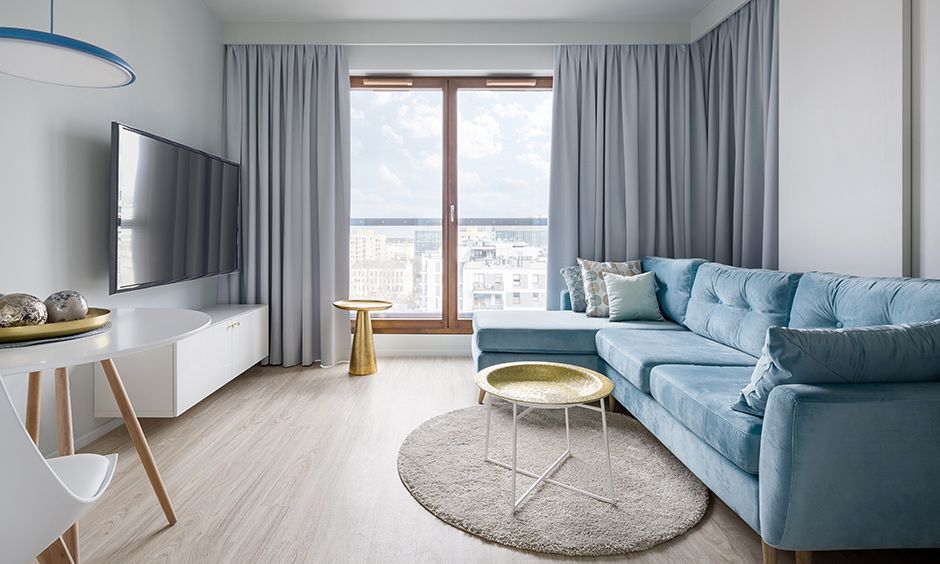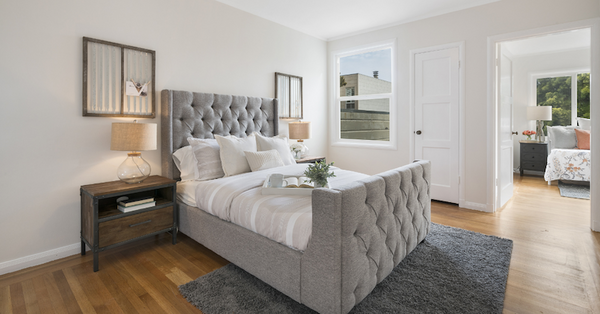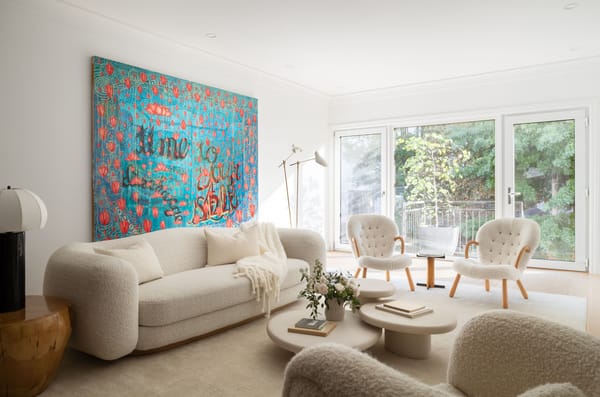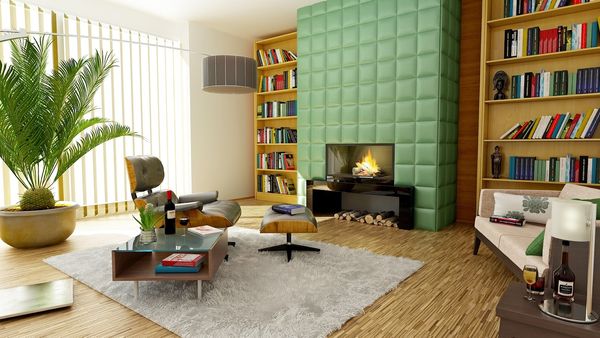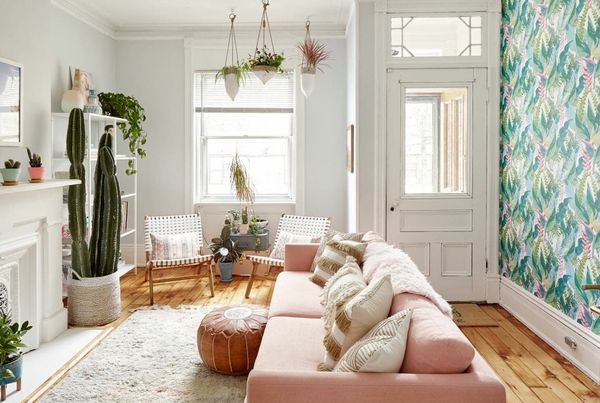Curtain sizes play a significant role in enhancing the aesthetic appeal and functionality of your living space. The right curtains can transform the look and feel of a room, while the wrong size can throw the entire space off-balance.
This comprehensive guide will help you navigate the world of curtain sizes, ensuring that you choose the perfect fit for your windows.
Understanding Curtain Sizes
Hanging Curtains
Curtain dimensions are usually expressed in width and length measurements. The width refers to the horizontal measurement, while the length indicates the vertical measurement from the top of the curtain to the bottom. Here are the standard curtain sizes you'll commonly encounter:
- Narrow width: 45-54 inches
- Standard width: 55-80 inches
- Extra-wide width: 81-108 inches
Lengths typically range from 63 inches (for shorter windows) up to 120 inches (for floor-length curtains). However, custom sizes are also available for those with unique window dimensions or design preferences.
Measuring Your Windows for Curtains
Curtain Lengths
Accurate measurements are crucial for selecting the ideal curtain size. To measure your windows for curtains, follow these steps:
Measure the width
Using a tape measure, determine the width of your window, including any molding or trim. Add 2-8 inches on either side to account for the rod brackets and to ensure the curtains will fully cover the window when closed.
Measure the length
Decide where you want your curtains to hang from (e.g., from the top of the window frame, below the molding, or from the ceiling) and measure the distance to your desired curtain length (e.g., window sill, below the window, or floor-length).
It's essential to have both the width and length measurements before shopping for curtains to ensure the perfect fit.
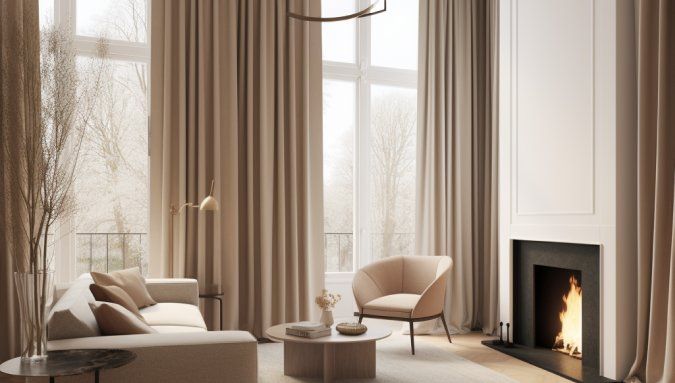
Selecting the Right Curtain Size
Curtain Panels
With your window measurements in hand, it's time to choose the appropriate curtain size. Here are some factors to consider:
Coverage
Ensure the curtains you select will adequately cover your window, providing privacy and blocking out light as needed. Wider curtains may be necessary for larger windows or those that require more insulation.
Style
The curtain size you choose will impact the overall look of your space. Floor-length curtains create an elegant, sophisticated ambiance, while shorter lengths offer a more casual, relaxed feel.
Functionality
Consider how often you'll open and close your curtains. Heavier, wider curtains may be more challenging to maneuver, while narrower options are easier to manage.
Popular Curtain Styles and How Sizes Impact Them
Tier Curtains
There are various curtain styles to choose from, and the size you select will affect the overall appearance. Some popular curtain styles include:
Pencil pleat
A classic, gathered curtain style that works well with most window sizes. Ensure that the pleats are evenly spaced and that the curtain width is sufficient to cover the window when closed.
Eyelet
A modern option featuring metal rings along the top of the curtain, eyelet curtains work best with longer lengths that fall straight to the floor.
Tab top
Casual and easy to hang, tab top curtains are suitable for both small and large windows. The curtain size should be slightly wider than the window to account for the tabs' spacing.
Goblet pleat
An elegant, formal style, goblet pleat curtains are best suited for larger windows and grand spaces. Choose a longer length for a dramatic effect.
Tips for Styling Your Curtains
Window Sill Curtains
Once you've selected the perfect curtain size, it's essential to style them appropriately to enhance your space. Here are some tips for styling your curtains:
Layering
Combine different curtain sizes and styles to add depth and interest to your window treatments. For example, pair a sheer, floor-length curtain with a heavier, shorter curtain to create a layered effect.
Rod placement
The position of your curtain rod can impact the perceived size of your windows. Placing the rod higher than the window frame can make your windows appear taller, while extending the rod beyond the window width can create the illusion of a wider window.
Fullness
For a luxurious, voluminous look, choose curtains that are 2-3 times the width of your window. This will allow for ample fabric folds and an opulent appearance.
Accessories
Tiebacks and holdbacks can help shape your curtains and control the amount of light entering your space. Choose accessories that complement the size and style of your curtains for a cohesive look.
Hemming
If you're unable to find the perfect curtain size for your windows, consider purchasing a longer length and hemming the curtains to your desired size. This is an easy and affordable way to achieve a custom fit.
Material
From luxurious velvet to airy linen, drapery materials dramatically influence a room's ambiance. Silky satins exude opulence, while rustic burlap introduces a touch of countryside charm. For a breezy coastal vibe, opt for sheer voiles, or choose drapes made from linen. Your choice in curtain fabric can truly transform your space.
Conclusion
Curtain Rods
Selecting the right curtain size is essential for both aesthetic and functional purposes. By understanding curtain sizes, measuring your windows accurately, and considering factors like coverage, style, and functionality, you can choose the perfect curtains for your space.
Remember to style and accessorize your curtains thoughtfully to create a cohesive, visually appealing look that enhances your home's overall design. With this comprehensive guide on curtain sizes, you're now well-equipped to navigate the world of window treatments and transform your living space with the perfect curtains. Happy decorating!

